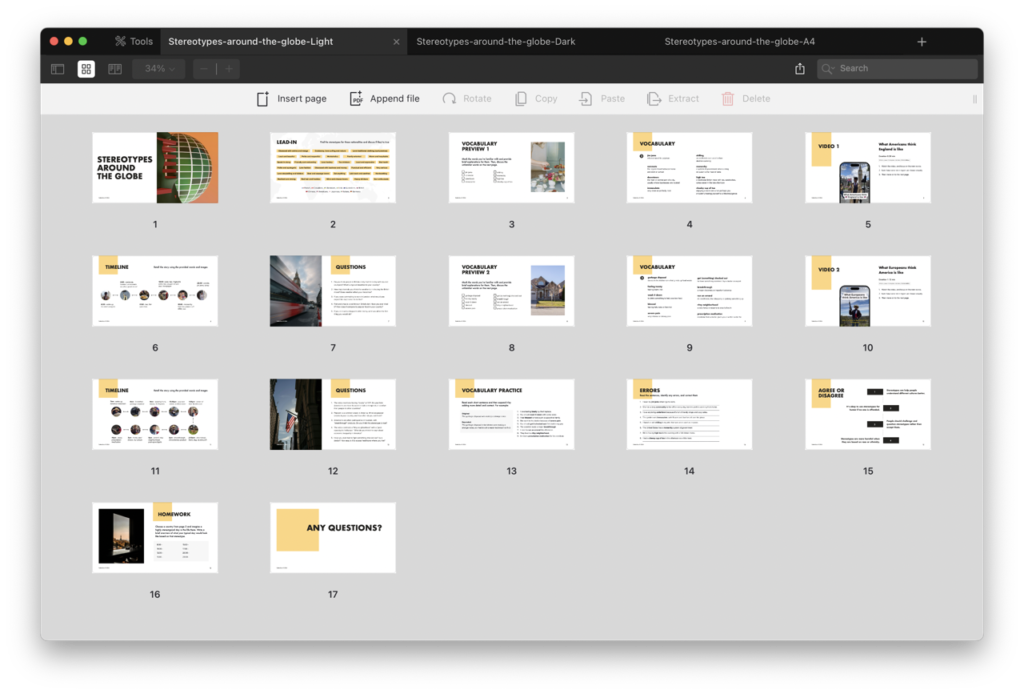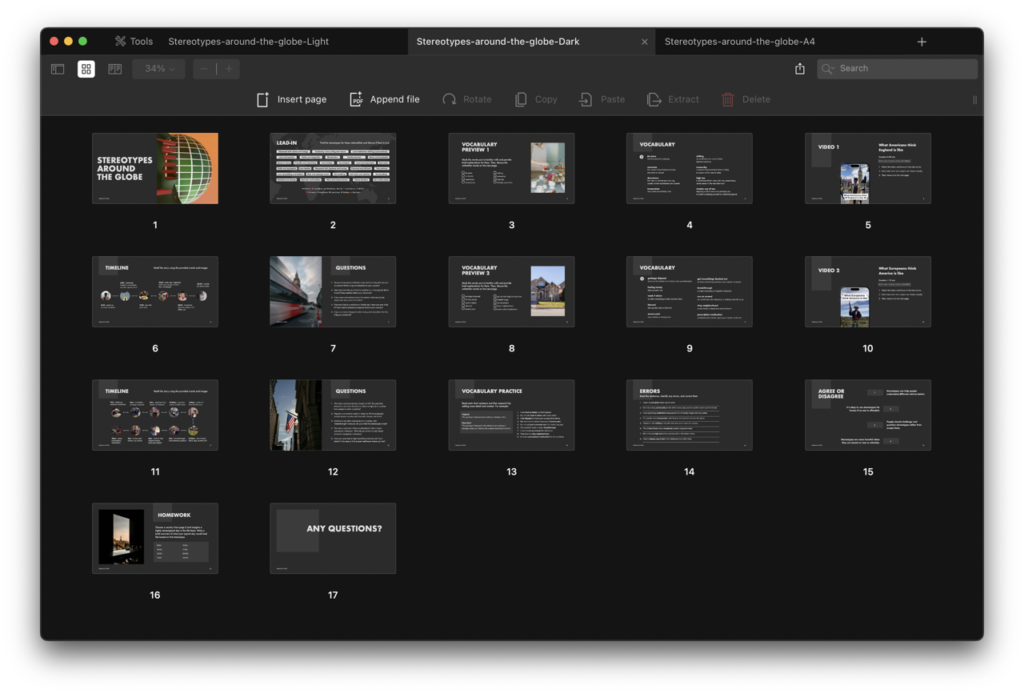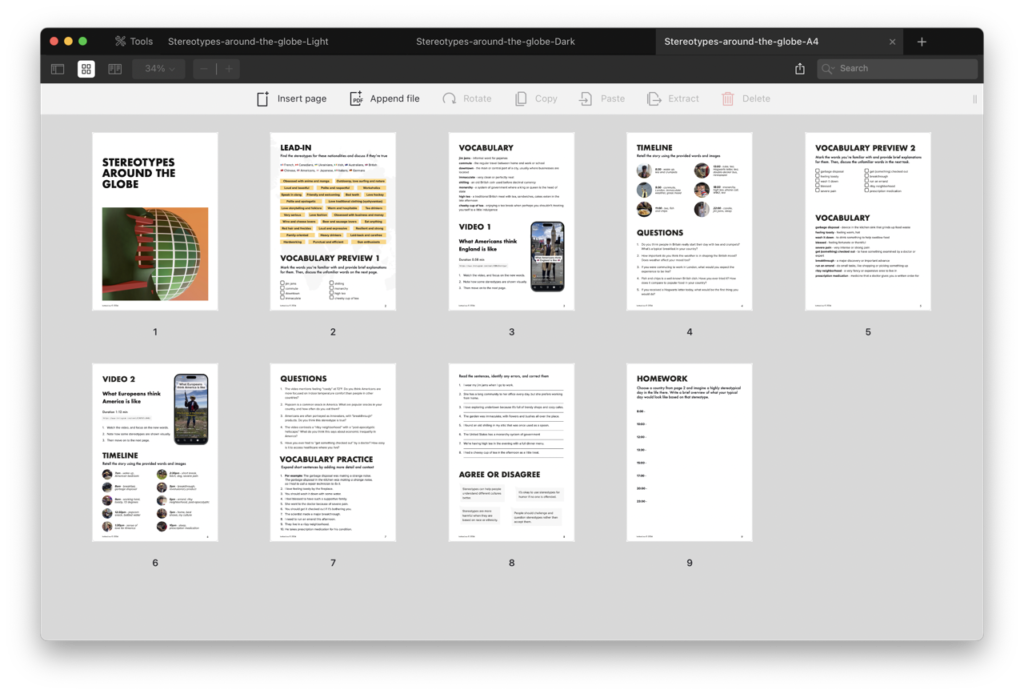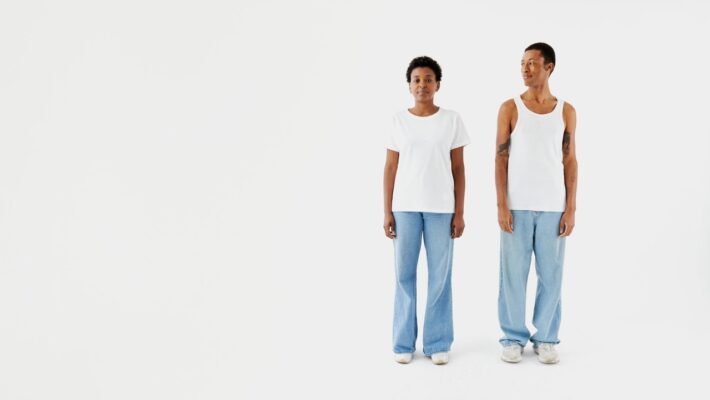Stereotypes Around the Globe

In this B2-level lesson, students will explore stereotypes around the world through engaging vocabulary practice and lively discussions. The lesson features two short, funny videos that highlight cultural clichés, sparking conversation and critical thinking. Students will have plenty of opportunities for speaking, sharing opinions, and challenging common stereotypes.
| Type | Level | Vocabulary | Video Duration | Lesson Time |
| Regular Lesson | B2 / Upper-Intermediate | 18 words | 0:58 min & 1:12 min | 60-90 min |



Vocabulary
- Jim jams
- Commute
- Downtown
- Immaculate
- Shilling
- Monarchy
- High tea
- Garbage disposal
- Feeling toasty
- Wash it down
- Blessed
- Severe pain
- Get (something) checked out
- breakthrough
- Run an errand
- Ritsy neighborhood
- Prescription medication
Contents
- Lead-in
- Vocabulary preview 1
- Vocabulary
- Video 1
- Timeline
- Questions
- Vocabulary preview 2
- Vocabulary
- Video 2
- Timeline
- Questions
- Vocabulary practice
- Errors
- Agree or disagree
- Homework
Lead-in
This ESL lesson includes a single, but comprehensive, lead-in page covering 11 nationalities and their common stereotypes. Students will discuss which stereotypes hold true and explain their answers, with room for varied opinions. For guidance, refer to the keys file with suggested answers.
Vocabulary preview 1, Vocabulary 1
Before watching the first video, students will review eight challenging words, identify the ones they know, and provide brief explanations. Then, they’ll move to the next page to see definitions and discuss the unfamiliar words. Assist them as needed and provide additional examples if necessary.
Video 1, Timeline, Questions
On the video page about what Americans think England is like, students will watch a short, highly stereotypical video about life in London, originally posted on Instagram. They should focus on the new vocabulary and how some stereotypes are portrayed visually. After watching, students move to the next page, which presents a timeline of a stereotypical day in London. They will retell the timeline using the provided words and images. To wrap up, there are five discussion questions related to the first video. You can review as many as needed with your class.
Vocabulary preview 2, Vocabulary 2
The next part focuses on a vocabulary preview with 10 words. Students will identify the words they know and briefly explain them. Afterward, they’ll move to the next page with definitions to understand the unfamiliar words.
Video 2, Timeline, Questions
The second video in this lesson is a fun sketch from Instagram titled “What Europeans Think America Is Like.” Students will watch the video, focus on the new vocabulary, and observe how stereotypes are displayed visually. Afterward, they’ll move to the timeline page, which is more detailed this time, featuring 10 keywords. Using this information, students will retell the story. Following that, there are five discussion questions related to American lifestyle. Feel free to discuss as many of these as needed for your lesson.
Vocabulary practice, Errors, Agree or disagree
The practice page includes an activity where students expand short sentences by adding more detail and context. An example is provided, and they will do the same for nine other sentences. After this, there are eight sentences containing errors for students to read and correct. Key vocabulary is highlighted in each sentence, but these are not the errors. If there’s time left in the lesson or you want to extend it, you can discuss the statements on the Agree/Disagree page about stereotypes. Explore how to challenge and question them, whether stereotypes are harmful, and if they can help people understand different cultures better.
Vocabulary practice, Errors, Agree or disagree
The homework page includes a task similar to the videos in this lesson. Students choose a country from page 2 or any country of their choice and imagine a highly stereotypical day there. You can assign them to write a brief overview of this day, or, to extend the class further, group students to brainstorm and come up with funny stereotypes for a typical day in life.



